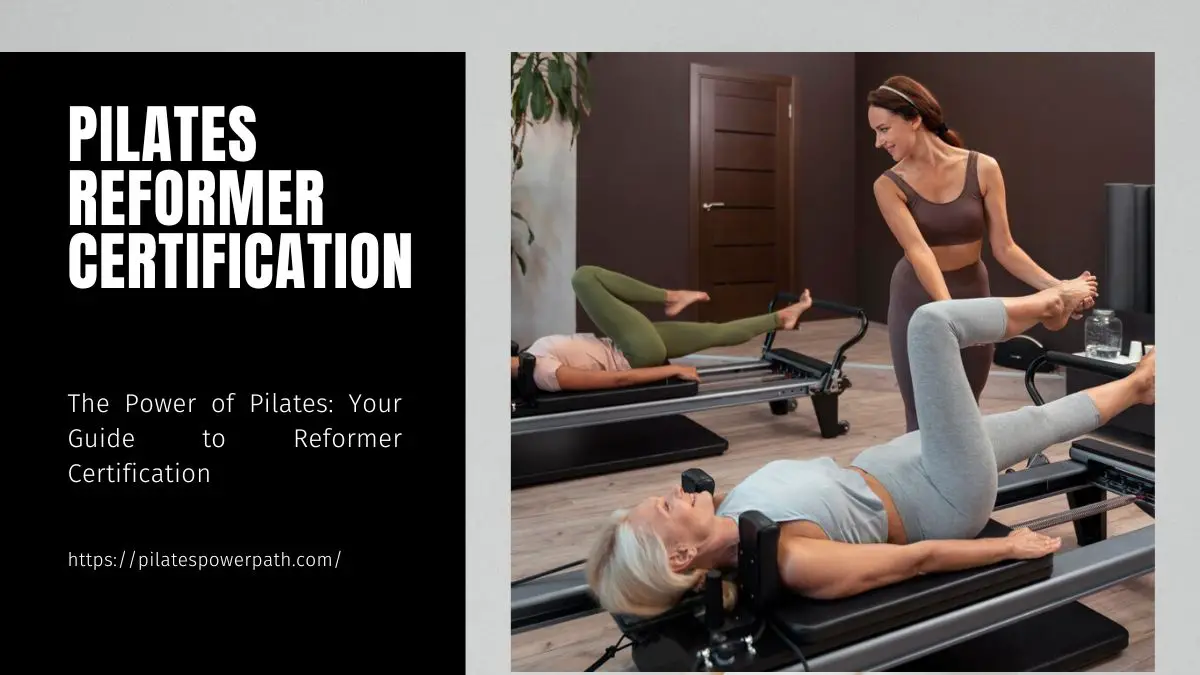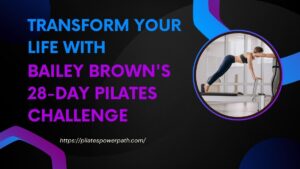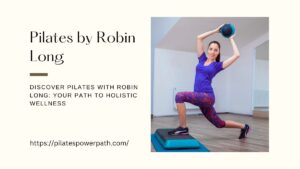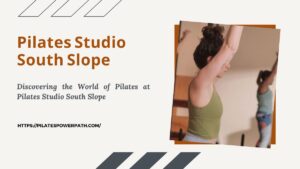Welcome to the world of Pilates, where strength, flexibility, and mindfulness converge to transform not just bodies, but lives. Among the various apparatus used in Pilates, the Reformer stands out as a versatile and dynamic tool for practitioners of all levels. If you’re passionate about Pilates and eager to deepen your practice or share its benefits with others, obtaining a Reformer certification is the next logical step on your journey. In this comprehensive guide, we’ll delve into everything you need to know about Pilates Reformer certification, from its fundamentals to the practicalities of teaching and beyond.
Understanding Pilates Reformer
What is a Pilates Reformer?
At its core, the Pilates Reformer is a bed-like frame equipped with a sliding carriage, springs, straps, and pulleys. Developed by Joseph Pilates himself, the Reformer provides resistance and support to facilitate a wide range of exercises targeting different muscle groups. Its adjustable components allow for endless variations, making it suitable for individuals of all fitness levels and abilities.
History and Evolution of the Reformer
Joseph Pilates designed the Reformer in the early 20th century as part of his revolutionary approach to exercise and rehabilitation. Over the years, the Reformer has undergone several modifications and enhancements, evolving into the sophisticated apparatus we know today. While traditional wooden Reformers remain in use, modern versions incorporate advanced materials and ergonomic design principles for enhanced comfort and functionality.
Read More: Unveiling the Secrets of Pilates: A Guide to The Pilates Room
Components and Features of a Reformer Machine
The Reformer comprises several key elements, each serving a specific purpose in facilitating movement and resistance. These include the carriage, springs, footbar, straps, and pulleys. Understanding how these components interact is essential for effective Reformer practice and instruction. From adjusting spring tension to utilizing various foot positions, mastering the Reformer’s features unlocks a world of possibilities for creative and targeted workouts.
Benefits of Reformer Pilates
Physical Benefits
Reformer Pilates offers a multitude of physical benefits, including improved strength, flexibility, posture, and balance. By engaging both small stabilizing muscles and major muscle groups, Reformer exercises promote functional movement patterns and joint stability. The resistance provided by the springs helps develop lean muscle mass without adding bulk, resulting in long, toned muscles and a sculpted physique.
Mental Benefits
In addition to its physical rewards, Reformer Pilates also nurtures mental well-being. The focus required to perform precise movements with control and fluidity cultivates mindfulness and concentration. Many practitioners find that Reformer sessions serve as a form of moving meditation, allowing them to quiet the mind, reduce stress, and enhance overall mental clarity and resilience.
Rehabilitation and Injury Prevention
One of the most compelling aspects of Reformer Pilates is its rehabilitative potential. Its low-impact nature and customizable resistance make it an ideal modality for individuals recovering from injury or managing chronic conditions such as back pain or arthritis. Through targeted exercises and careful alignment cues, certified instructors can help clients safely rebuild strength, mobility, and confidence in their bodies.
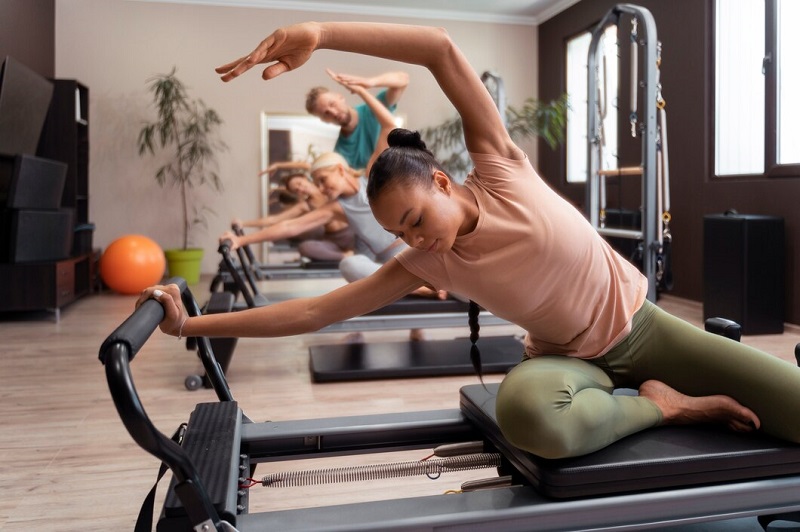
Getting Started: Pilates Reformer Certification
Why Get Certified?
While anyone can perform Pilates exercises on a Reformer, obtaining certification demonstrates a commitment to excellence and professional integrity. Certified instructors possess the knowledge, skills, and expertise to safely and effectively guide clients through Reformer workouts, maximizing results while minimizing the risk of injury. Moreover, certification opens doors to career opportunities in fitness centers, studios, and private practice settings.
Eligibility Requirements
Before embarking on the journey to Reformer certification, aspiring instructors must meet certain eligibility criteria established by certifying bodies. These typically include a minimum age requirement, a high school diploma or equivalent, and a foundational understanding of anatomy, physiology, and exercise science. Some programs may also require prior experience in Pilates or fitness instruction.
Choosing the Right Certification Program
With numerous certification programs available, selecting the right one can seem daunting. It’s essential to research prospective programs thoroughly, considering factors such as accreditation, curriculum content, instructor credentials, and cost. Look for programs that align with your learning style, career goals, and schedule availability. Additionally, seek feedback from current or former students to gain insight into the program’s quality and effectiveness.
What to Expect During Certification
Curriculum Overview
Pilates Reformer certification programs typically consist of a comprehensive curriculum covering both theoretical and practical aspects of Reformer instruction. Topics may include Pilates principles and philosophy, anatomy and biomechanics, exercise technique and cueing, class sequencing and programming, client assessment and modification, and business and ethics standards. Certification candidates can expect to engage in a combination of lectures, hands-on workshops, self-study assignments, and practical assessments.
Practical Training Sessions
Central to Reformer certification is hands-on practical training, where candidates apply theoretical knowledge to real-world teaching scenarios. Under the guidance of experienced instructors, candidates learn proper Reformer setup and usage, exercise progression and regression, alignment cues, and spotting techniques. Practical sessions may involve working one-on-one with clients, teaching group classes, and receiving constructive feedback to refine teaching skills.
Written Exams and Assessments
In addition to practical training, Reformer certification programs typically include written exams and assessments to evaluate candidates’ understanding and proficiency. Written exams may cover topics such as anatomy and physiology, Pilates principles, exercise techniques, and safety guidelines. Practical assessments may involve teaching demonstrations, class planning and sequencing, and client interaction scenarios. Successful completion of both practical and written components is usually required to earn certification.
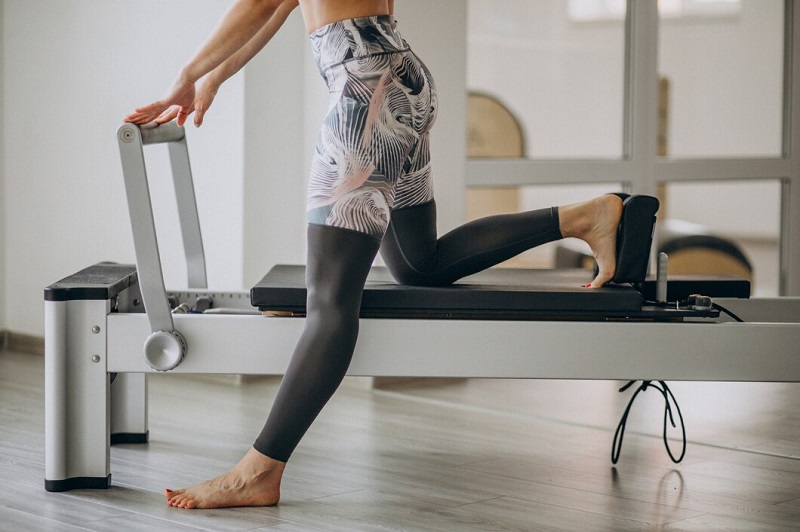
Mastering the Reformer Techniques
Fundamentals of Reformer Exercises
At the heart of Reformer Pilates are foundational exercises that target key muscle groups while promoting core strength, stability, and flexibility. These include exercises performed in various body positions—supine, prone, seated, kneeling, and standing—utilizing different spring tensions and equipment settings. Mastering the fundamentals is essential for building a strong foundation and progressing safely and effectively in Reformer practice.
Proper Alignment and Posture Cues
Effective Reformer instruction hinges on proper alignment and posture cues to ensure optimal movement mechanics and injury prevention. Certified instructors emphasize principles such as neutral spine alignment, pelvic stability, shoulder girdle placement, and ribcage positioning throughout each exercise. Clear and concise verbal cues, coupled with tactile feedback and visual demonstrations, help clients maintain alignment and maximize exercise benefits.
Modifications and Progressions for Different Clients
One of the hallmarks of skilled Reformer instruction is the ability to adapt exercises to meet the needs and abilities of individual clients. Certified instructors are adept at offering modifications and progressions to accommodate factors such as injury history, fitness level, mobility restrictions, and personal goals. Whether it’s adjusting spring tension, altering body positioning, or incorporating props, instructors tailor each session to ensure a safe, effective, and enjoyable experience for every client.
Anatomy and Physiology
Understanding the Body’s Mechanics in Pilates
Central to Reformer instruction is a deep understanding of human anatomy and biomechanics—the way the body moves and functions. Certified instructors possess comprehensive knowledge of skeletal structure, muscular anatomy, joint mechanics, and physiological principles relevant to Pilates practice. This understanding informs exercise selection, cueing strategies, and client assessment, enabling instructors to design personalized workouts that promote optimal movement patterns and biomechanical efficiency.
Muscle Groups Targeted in Reformer Exercises
Reformer Pilates engages a wide range of muscle groups, from deep stabilizers to larger prime movers, in a balanced and coordinated manner. Exercises are designed to target specific muscle groups while promoting overall functional strength, flexibility, and neuromuscular control. Commonly targeted areas include the core (abdominals, obliques, and lower back), glutes, thighs, shoulders, and upper back. Understanding the role of each muscle group in movement allows instructors to create targeted workouts that address clients’ individual needs and goals.
Injury Prevention and Contraindications
Safety is paramount in Reformer Pilates, and certified instructors are trained to identify and address potential contraindications and risk factors for injury. By conducting thorough client assessments and screening protocols, instructors can identify any underlying health concerns or musculoskeletal imbalances that may impact exercise selection and execution. Additionally, instructors are adept at offering modifications and alternatives to accommodate clients with specific injuries, conditions, or limitations, ensuring a safe and effective workout experience for all participants.
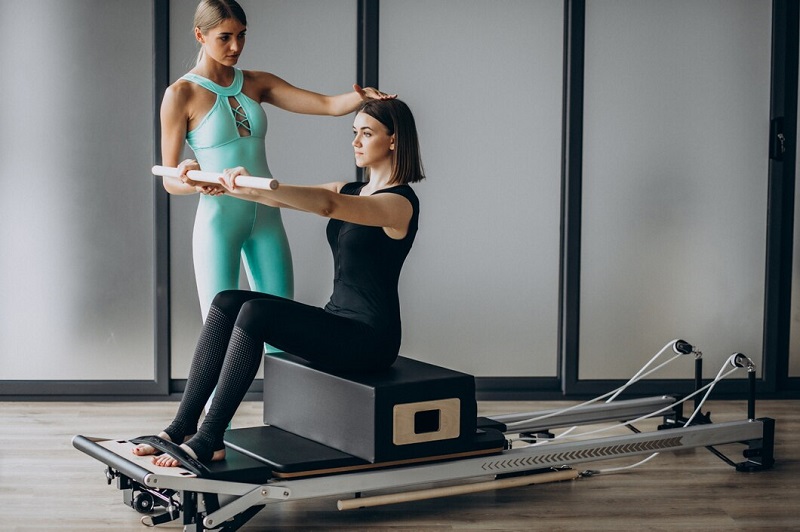
Teaching Methodology
Effective Cueing and Communication Skills
Clear and concise cueing is essential for guiding clients through Reformer exercises with precision and intention. Certified instructors use verbal cues, visual demonstrations, and tactile feedback to communicate movement concepts, alignment principles, and breath control effectively. By employing language that is descriptive, encouraging, and empowering, instructors foster a supportive and engaging learning environment that motivates clients to maximize their potential and achieve their goals.
Client Assessment and Goal Setting
Successful Reformer instruction begins with a thorough assessment of each client’s needs, goals, and movement capabilities. Certified instructors employ a variety of assessment tools and protocols to gather relevant information, including postural analysis, movement screenings, flexibility assessments, and client intake forms. Based on this assessment data, instructors collaborate with clients to establish realistic and achievable goals, whether it’s improving strength and flexibility, alleviating pain and discomfort, or enhancing athletic performance.
Planning and Structuring Reformer Classes
Effective class planning is the cornerstone of successful Reformer instruction, allowing instructors to deliver safe, balanced, and engaging workouts that meet the needs and preferences of their clients. Certified instructors employ a systematic approach to class design, incorporating principles of exercise science, biomechanics, and progressive overload. They carefully select exercises and sequences that target specific muscle groups and movement patterns while ensuring adequate warm-up, cooldown, and recovery periods. By offering variety, challenge, and progression, instructors keep classes dynamic and stimulating, motivating clients to stay committed and achieve lasting results.
Business and Marketing Strategies
Building a Client Base
For aspiring Pilates instructors, building a loyal client base is essential for long-term success and sustainability. Certified instructors employ a variety of marketing strategies to attract new clients and retain existing ones, including word-of-mouth referrals, social media marketing, networking events, and community outreach initiatives. By establishing a strong online presence, showcasing their expertise and unique teaching style, and offering value-added services such as workshops, events, and promotions, instructors can position themselves as trusted authorities in the field and attract a steady stream of clients.
Setting Up a Pilates Studio or Incorporating Reformer Classes
For instructors interested in entrepreneurship, setting up a Pilates studio or incorporating Reformer classes into an existing fitness facility offers a rewarding opportunity to share their passion and expertise with a wider audience. From securing a suitable location and obtaining necessary permits and licenses to investing in quality equipment and designing an inviting and functional studio space, launching a Pilates business requires careful planning and attention to detail. Additionally, instructors must consider logistical factors such as class scheduling, pricing and packaging options, and client management systems to ensure smooth and efficient operations.
Marketing and Promoting Your Services
Effective marketing is essential for attracting clients and generating awareness of your Pilates offerings. Certified instructors leverage a mix of online and offline marketing channels to reach their target audience and communicate their unique value proposition. This may include creating a professional website with compelling content and imagery, optimizing search engine visibility through SEO techniques, engaging with followers on social media platforms, and investing in targeted advertising campaigns. By crafting a consistent and cohesive brand identity and messaging across all marketing channels, instructors can build trust, credibility, and loyalty among their clientele and differentiate themselves from competitors.
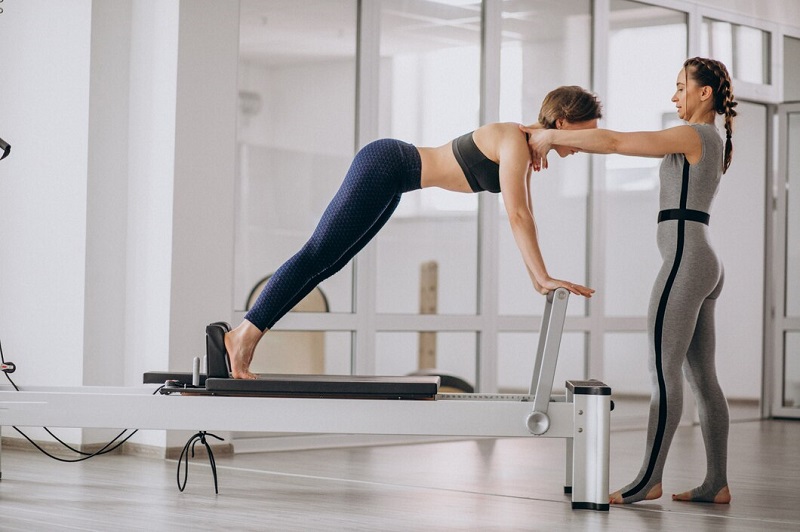
Maintaining Certification and Continuing Education
Renewal Requirements
Pilates Reformer certification is not a one-time achievement but rather an ongoing commitment to professional development and excellence. Certified instructors are typically required to renew their certification periodically by completing continuing education credits, demonstrating continued competency, and staying abreast of industry advancements and best practices. Renewal requirements vary by certifying body but often include participation in workshops, seminars, conferences, or online courses related to Pilates, fitness, or allied health fields.
Continuing Education Opportunities
Fortunately, there is no shortage of continuing education opportunities available to Pilates instructors seeking to expand their knowledge and skills. From advanced Reformer training and specialty workshops to certifications in complementary modalities such as mat Pilates, barre, or functional movement, instructors can choose from a diverse array of educational offerings to suit their interests and career goals. Additionally, many certifying bodies offer online courses, webinars, and self-study programs that provide convenient and flexible options for earning continuing education credits.
Staying Updated with Industry Trends and Advancements
In a rapidly evolving industry like fitness and wellness, staying updated with the latest trends, research findings, and technological advancements is crucial for remaining competitive and relevant as a Pilates instructor. Certified instructors are encouraged to actively seek out opportunities for professional growth and learning, whether it’s attending industry conferences, subscribing to reputable publications and journals, joining online forums and discussion groups, or participating in mentorship programs. By staying curious, adaptable, and open-minded, instructors can continuously elevate their teaching practice and provide maximum value to their clients.
Conclusion
In conclusion, Pilates Reformer certification represents a significant investment in both personal and professional growth for aspiring instructors. By mastering the principles, techniques, and methodologies of Reformer Pilates, certified instructors are empowered to guide clients toward their fitness goals safely, effectively, and joyfully. Whether you’re passionate about sharing the transformative power of Pilates with others or seeking to elevate your practice to new heights, Reformer certification opens doors to a world of opportunities for learning, growth, and fulfillment.
Top Frequently Asked Questions
While certification is not always mandatory, it demonstrates a commitment to professionalism, safety, and expertise in Reformer instruction. Many employers and clients prefer to work with certified instructors for assurance of quality and competence.
The duration of certification programs varies depending on the certifying body and program format. Typically, programs range from several weeks to several months, with a combination of in-person or online coursework, practical training, and assessments.
Certified Pilates Reformer instructors can pursue various career paths, including working in fitness centers, Pilates studios, rehabilitation clinics, corporate wellness programs, or starting their own private practice. Additionally, opportunities exist for teaching group classes, offering private sessions, leading workshops, and training other instructors.

